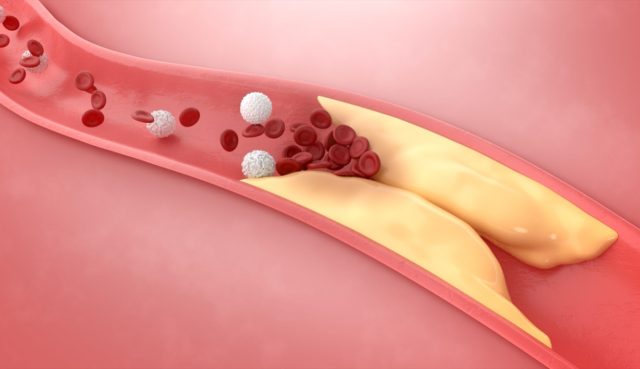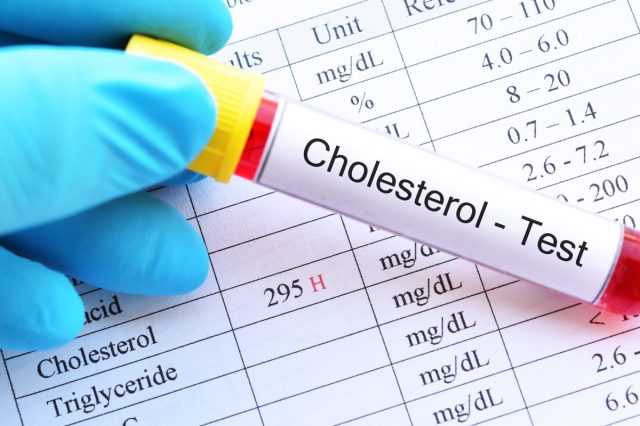5 Reasons Your Body May be at Risk for Heart Disease

Heart disease remains the leading killer in the United States and artery disease is the most common type. "About 20.1 million adults age 20 and older have CAD (about 7.2%)," according to the Centers for Disease Control and Prevention. "In 2020, about 2 in 10 deaths from CAD happened in adults less than 65 years old." In addition, the CDC says the disease killed 382,820 people in 2020."
Coronary artery disease (CAD) happens when the walls of the arteries are choked with plaque and can't properly perform their job of sending enough blood, oxygen and nutrients to the heart. "Unfortunately, it is hard to deny that our society is not structured in a way that leads to positive health outcomes," Dr. Tomi Mitchell, a Board-Certified Family Physician with Holistic Wellness Strategies says. "We have shifted from an era where physical activity was essential for daily life and food was found by physical hunting and gathering to a modern age where convenience and speed are at the helm of many decisions throughout our day-to-day lives. This shift has resulted in an apparent increase in our population's heart disease and chronic illnesses."
Dr. Mitchell adds, "Though we may understand why this happens, we still lack effective strategies to combat these issues. For this reason, it is essential that, as a society, we properly address these healthcare outcomes head-on and develop a comprehensive plan for addressing them. One of these negative health outcomes is coronary artery disease." Read on to learn more about CAD and signs that indicate you have the disease. Please consult your physican for medical advice.
What to Know About Artery Disease

Valay Parikh, MD, Cardiologist at Staten Island University Hospital tells us, "Coronary artery disease ("CAD") is a condition to describe clogging of heart arteries due to fat deposits. It is extremely common. It is no longer a disease of old age. With changing lifestyles in past decades, people have coronary artery disease at younger ages and result in catastrophic outcomes if ignored."
Dr. Mitchell explains, "Coronary artery disease (CAD) is a serious and sometimes life-threatening condition that occurs when plaque builds up in the coronary arteries, causing them to narrow and reduce blood flow to the heart. People should be aware that CAD is a silent killer, as it may present with few or no symptoms until a major blockage has occurred. Risk factors for developing CAD include having high cholesterol, diabetes, abnormal blood pressure, being obese and sedentary, smoking, old age, having a family history of CAD, and excess alcohol consumption. Additionally, research has shown that maintaining a healthy diet and exercise regimen can help decrease the risks and symptoms of the disease. Those with a higher risk of developing CAD should monitor their health closely and speak with their doctor about any potential issues or concerns."
Risk Factors

Dr. Mitchell tells us, "Coronary artery disease is a serious condition that can lead to heart attack, stroke, and other life-threatening conditions. Those at the most significant risk of developing coronary artery disease include those who have a strong family history of the disease, smokers, those with high cholesterol or high blood pressure, those with diabetes or prediabetes, and those who are physically inactive.
Additionally, certain ethnic backgrounds are more prone to this cardiac issue, such as African American, Hispanic/Latino, and Native American populations. On average, one in every three Americans will develop some form of coronary artery disease in their lifetime. It is critical for everyone to be aware of their risk factors for this health issue so that they can take steps toward prevention and management."
RELATED: 40 Health Symptoms That Are More Serious Than You Think
Artery Disease is Serious

Dr. Parikh emphasizes, "CAD can be a very serious disorder. Due to blockages in arteries of the heart, coronary arteries, one can experience heart attack, and sudden cardiac death."
Dr. Mitchell explains, "Coronary Artery Disease (CAD) is a very serious medical condition that, if left untreated, can have serious and even life-threatening consequences. CAD is the narrowing and hardening of the arteries which supply blood to the heart, making it difficult for blood flow to reach the vital organ. CAD increases the risk of stroke, heart attack, and even death.
Due to this risk, healthcare providers strongly recommend taking preventative measures such as a healthy diet, exercise, quitting smoking, and regular check-ups if there is a family history of heart disease or other risk factors like high cholesterol or hypertension present. Fortunately, CAD can be managed with lifestyle changes and medications/treatments available from health care professionals. For those suffering from CAD, early diagnosis and long-term management are key components to preventing further complications due to this disease."
Why Artery Disease is So Common

According to Dr. Parikh, "CAD is usually due to risk factors of hypertension, diabetes, elevated cholesterol. Due to the rise of these issues, increasing physical and mental stress, poor sleep, CAD is more common than before. CAD can be deferred or prevented with taking care of yourself. Earlier one can make changes, they serve better for overall longevity. Few of the common changes one can make are:
- Quit smoking if you smoke.
- Avoid excessive alcohol.
- Eat lots of fruits, vegetables, and foods with a lot of fiber. Avoid foods that have a lot of sugar.
- Walk or do some form of physical activity on most days of the week for at least 30 minutes. Aerobic exercise is preferred. However, any exercise which can be done in a safe manner is a good exercise.
- Lose weight if you are overweight.
- Seek help from a cardiologist right away. If the symptoms are bad, one should consider calling 911. "
Dr. Mitchell shares, "Coronary Artery Disease (CAD) is a common condition that affects millions of people worldwide every year. It can be caused by high cholesterol, which builds up in the arteries which carry blood to the heart. Cigarette smoking is also a major risk factor for CAD as it constricts blood vessels and reduces blood flow to the heart. Poor lifestyle choices, such as lack of exercise, increased fat intake and a diet low in fresh fruits and vegetables, are likely to increase one's chances of developing CAD. As these poor habits continue over time, they can slowly lead to a buildup of plaque on artery walls, leading to hardening of the arteries, hindering proper circulation throughout the body, and leading to health problems like a heart attack or stroke. In some cases, genetics can put individuals at higher risk for CAD, but making healthy life choices help reduce the chances greatly."
RELATED: 16 Vitamins That are a Waste of Money, Say Experts
Signs of Artery Disease

Dr. Parikh says, "Many people with CAD have no symptoms. For those who have symptoms, these are pain, pressure or discomfort in the center or left side of the chest or left arm. Other symptoms include shortness of breath, difficulty exercising, unusual sweating with exertion."
According to Dr. Mitchell, "Coronary artery disease, or CAD, is a leading cause of death worldwide and, if not monitored effectively, can have life-threatening consequences. The signs of being aware include shortness of breath, chest pains or pressure, extreme tiredness during moderate physical activity, an irregular heartbeat, and an accumulation of fluid in the feet, ankles, and legs.
If these symptoms are experienced for an extended period, it may indicate that CAD requires a medical diagnosis. Furthermore, some patients show no signs, so preventative solid measures such as regular exercise and a healthy diet are suggested to reduce the risk of developing this condition. Proactivity can make all the difference in maintaining heart health and preventing serious cardiovascular issues."
💪🔥Body Booster: Aim for 30 minutes of activity like walking or aerobics on most days of the week. Any safe exercise is good. And if you enjoyed this article, don't miss 40 Silent Signs of Illness in Your Body




